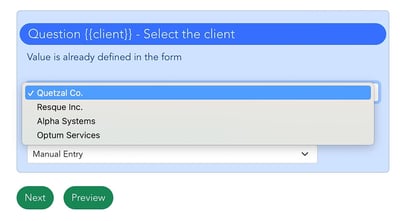Salesforce is the system of record for many organizations, capturing leads, pipeline metrics,...
Slideform for Sales Automation: Generate custom proposal decks
Do you spend too much time pulling together custom proposals? Creating proposals can take a lot of time and it can be so repetitive to copy and paste information into the deck. This is where automation can help!
In this tutorial, I will show you how to generate a customized proposal deck with Slideform sales automation. The final deck will include the prospective client name and logo, and the custom pricing, all while ensuring that my company branding, colors, and fonts are standardized.
4 simple steps to automating your proposals
- Create a deck template (Google Slides or Powerpoint)
- Link a data source with pricing and opportunity info
- Upload and configure your template in Slideform
- Fill in the form to generate your proposals
1. Proposal template


2. Link the data
Slideform connects to many data sources, including spreadsheets, databases, and Salesforce (coming soon).
In this example, I have the pricing info for each prospective client in a Google Sheet.

Notice that some of the columns in my sheet correspond to the pragmas in my template. These columns will be used to fill the pragmas in the final presentations. Other columns in the sheet are for internal calculations and will not appear in the presentation.
You can link the data source to Slideform for use in your proposals.
3. Configure your proposal deck template in Slideform
Finally, we can upload the deck template to Slideform and configure how you want the data to be populated.
There are many options:
- Have your sellers type in the information for each prospect
- Have sellers choose from a dropdown menu
- Pull data from your data source
- Pull images or logos from the web
- Calculate values using a simple function
Either way, your slides will be filled in and formatted beautifully each time you generate the presentation.
For example for the pragma, I set the form up so that I can choose from a dropdown list based on the client names that are in the spreadsheet.

Once I have the client name, I can look up the other data for that prospect in my data sheet.
I saved all my client logos in Google Drive, so I can also choose the client logo image and add it to the presentation automatically.
4. Fill in the form to generate the proposal
Now that my template and form is all set up, I can generate the presentation whenever I need to.
All the formatting, fonts, text, and sizing is taken care of and I just get a clean, professional, and accurate pricing proposal very quickly. And I can download it as a pdf, powerpoint, or save it to my Google Drive.
Now for the fun part! Sales Automation!
Let’s generate a presentation for each of the clients in my Google Sheet. All I have to do is go to my form and click Create Presentation. I choose the client’s name and click next and the slides are ready. No more copying and pasting!
If I have more proposals that I want to send out in the coming weeks, I can just add those clients to my sheet, go into Slideform, and generate the proposal slides with one click.
I hope you’ve enjoyed this intro to automating your sales proposals. Get in touch with Slideform at https://www.slideform.co/ .
Here's a video walkthrough of this example:



